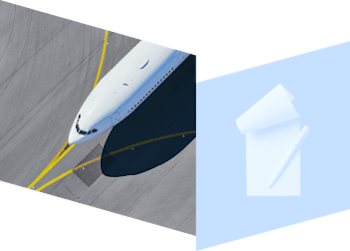
XaaS Provides the Blueprint for the Future of Aircraft Material Procurement
As featured in the MRO Business Today's August 2022 issue.
For years, airlines and the aviation support industry have invested billions in IT infrastructure, systems, and software for a limited return, particularly within operations and maintenance. On the commercial side, internet technologies have created a revolution in aviation, shifting the connection from the customer back to the airline and allowing the rapid deployment of new systems with strong ROIs. Internet direct booking and customer apps are fundamentally changing the relationship airlines have with their customers.
SkySelect is using some of the same fundamentals to offer a supply chain solution that has a rapid deployment with returns visible from day one. XaaS, which we’ll explain below, allows airlines to improve supply chain performance by tapping into world-class infrastructure, machine learning, AI, and network buying effects, with limited internal change management costs.
We are anticipating that this may have the same impact on airline supply chains as internet booking has had on revenue operations. Rapid deployment of new solutions, immediate ROIs, better access to data, and the knowledge that machine learning and AI can bring.
Understand Different Technology Service Models
Before we get deeper into material procurement, let’s first take a step back to understand today’s underlying technology services. The rise of digital transformation — where more people are turning to digital technology to solve legacy problems — is increasing customer demand for as-a-service offerings. There are four main models to understand (which each have their own offshoots).
Infrastructure-as-a-Service (IaaS)
IaaS refers to all IT infrastructure components, including servers, networking, storage, security, etc. In this model, the service provider provides the customer with the infrastructure components housed in its own facility, so all of the hardware is owned by the provider and used by the client. This model is best for clients who want to take control of their IT without having capital expenses and the hassle of managing a data center.
Platform-as-a-Service (PaaS)
In the PaaS model, the provider supplies the operating system (i.e., computing platform) in addition to the infrastructure components provided in IaaS. This model is best for customers using or requiring custom software applications.
Software-as-a-Service (SaaS)
Chances are you’ve heard of this model as it’s become one of the most common business models for technology companies. Applications like customer relationship management (CRM), project management, collaboration, and communications, document processing, and enterprise resource planning (ERP) are a few of many SaaS examples. In addition to what is offered in PaaS, the provider supplies software applications to the client (as opposed to clients using customer applications). This model is best for customers looking for a managed service with standard applications for business users who want a swift implementation process.
Everything-as-a-Service (XaaS)
XaaS has become the new gold standard, surpassing SaaS. With this model of products and services, pricing is based on either the outcome or the value offered. The philosophy of XaaS is anchored on helping customers achieve specific business outcomes by providing both the tools and know-how to get the job at hand accomplished. So it provides not only a software application but also the requisite service needed to run lightweight and agile operations. XaaS can be thought of as the next level of SaaS, which allows companies to reduce fixed overhead costs while staying nimble. Some examples are Amazon Web Services (AWS), Stripe, and Hubspot.
Applying XaaS to Aviation Parts Procurement
All of this sounds great, but how is it being applied to aircraft parts procurement? Let’s start with a term you are likely familiar with. eProcurement is the purchase and sale of supplies, work, and services through digital means, such as electronic data interchange and enterprise resource planning. So, you can think of eProcurement as the software application (SaaS) behind purchasing transactions.
The next level of that is eProcurement-as-a-Service (ePaaS), which adds an additional service layer on top of the software, making it a XaaS offering. Airlines, MROs, or lessors can simply hand over their material requirements, and ePaaS does the rest with its combination of experts and technology. These value-added services are layered on top of AI-powered algorithms to provide an end-to-end eProcurement experience from sourcing, purchasing, and order processing to delivery tracking.
This provides a much leaner and more effective tool as opposed to the legacy systems that have historically been deployed. The ePaaS model allows airlines to adopt the asset-light strategy so they can focus on what they do best - their core business of transporting people and things from A to B.
ePaaS allows customers to see tangible benefits within 8 weeks of deployment as opposed to traditional implementation phases that can take months and require entire systems to be uprooted.
ePaaS has proved to be especially useful for this time in aviation, where many organizations are faced with resource crunches and budgetary constraints. Not only does ePaaS allow for up to 90% of purchases to be automated, but it also drives down up to 20% costs while making transactions more streamlined and efficient.
If there is ever anything in question, outlying questions, or additional training needed, the service layer of ePaaS provides customers with the peace of mind that comes from hands-on customer service, which cannot be found in other models.
Conclusion
The world is changing rapidly because technology and material procurement is part of this evolution. There is no reason to fall back on outdated practices and tech that hasn’t innovated in decades. Everything-as-a-Service (XaaS) is the winning business model of the digitized world.
XaaS in the value chain transforms supplier-buyer relationships into a value network. Suppliers become specialized partners who cooperate as 'best-of-breed' in a data-driven ecosystem. Growth for the buyer represents growth for the "on-demand" business process partner. This highlights the direct goal alignment between supplier and buyer in the value network.

SkySelect is an eProcurement-as-a-Service platform for aircraft material. We combine people, processes, and technology to enable airlines to digitize and automate material purchasing for leaner and more asset-light operations.
